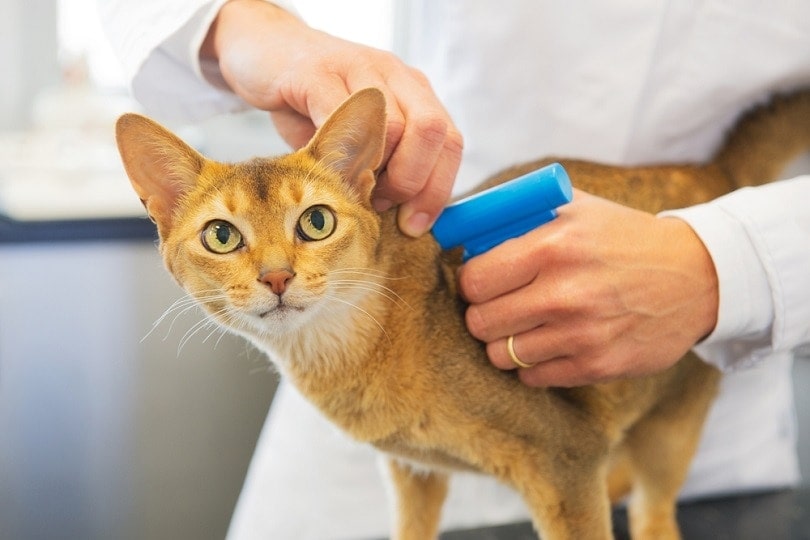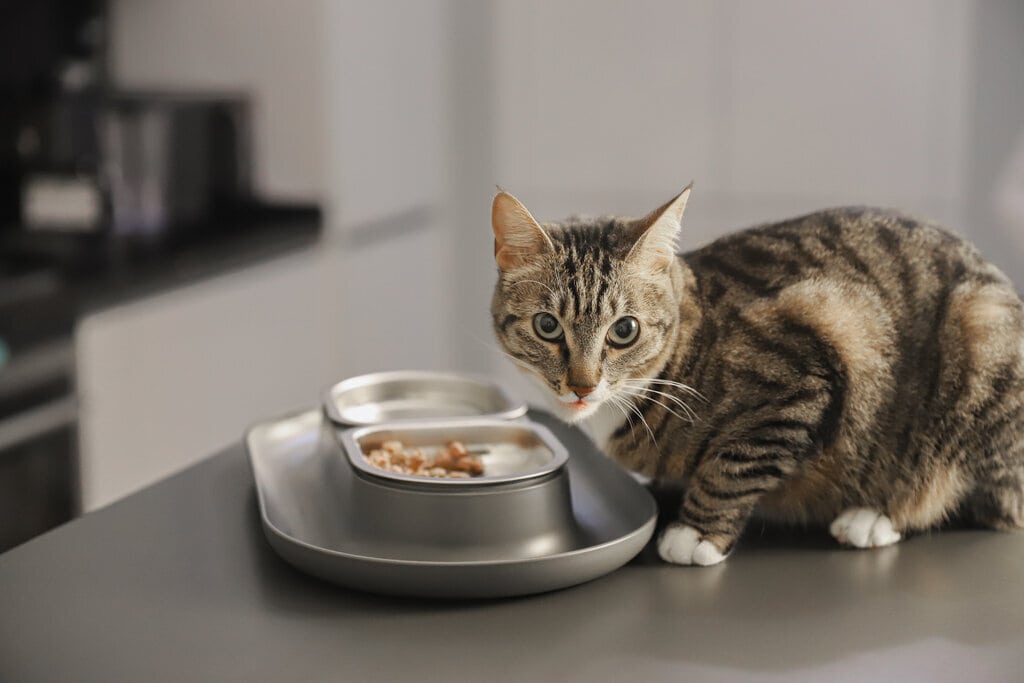Why Your Cat’s Butt is Red: 6 Vet-Reviewed Reasons
By Ashley Bates
Updated on
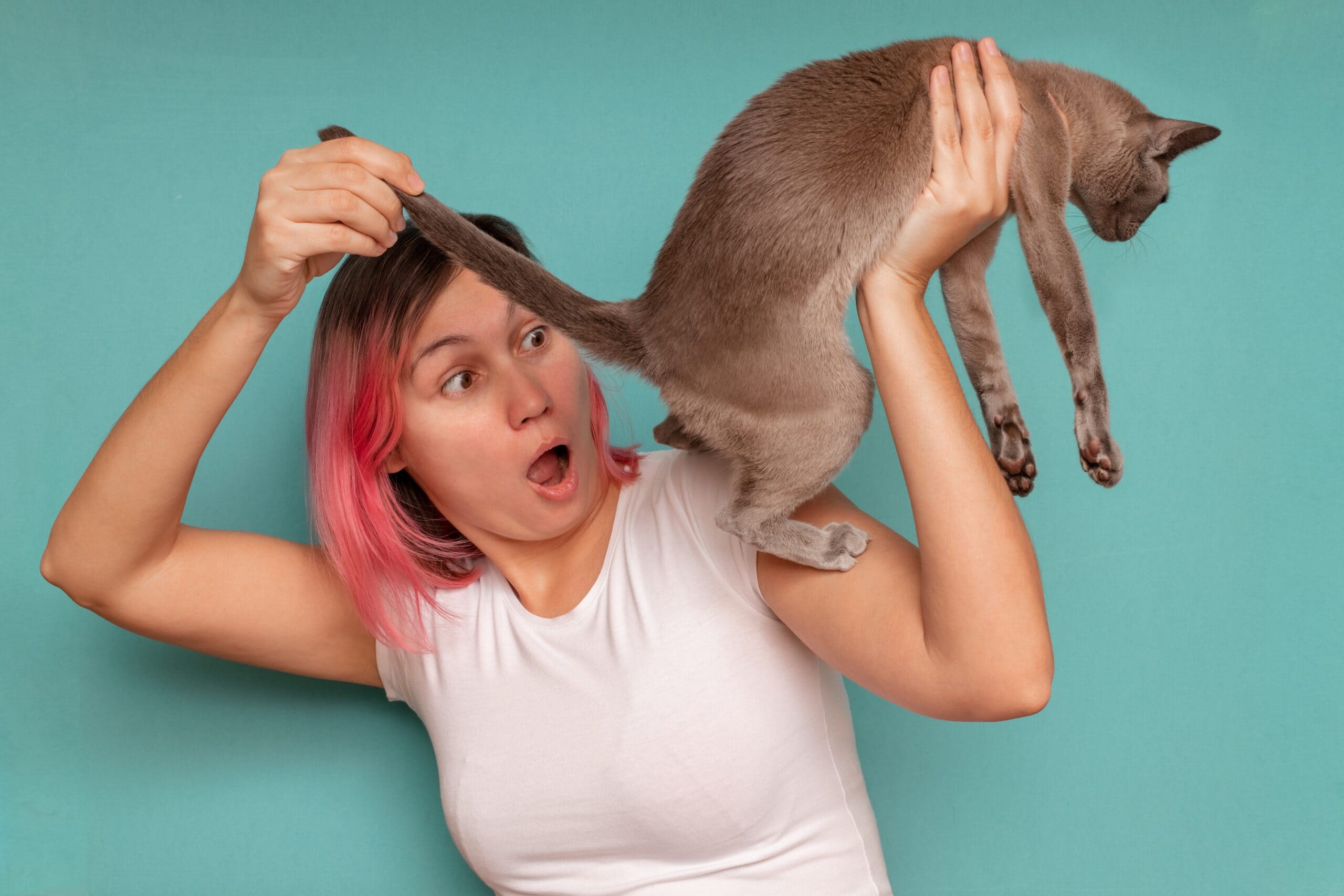
Cats often try to draw attention to their backside, so it’s no wonder if you’ve noticed a change. They will bless you with a shot of their goodies when you’re on your couch, innocently scrolling on your laptop, or lying down for an evening snooze.
If you have noticed recently that your cat’s hind end seems inflamed, irritated, or redder than usual, there isn’t a singular cause diagnosable by sight alone. Here are six possible reasons.
The 6 Reasons Why Your Cat’s Butt Is Red
1. Allergies
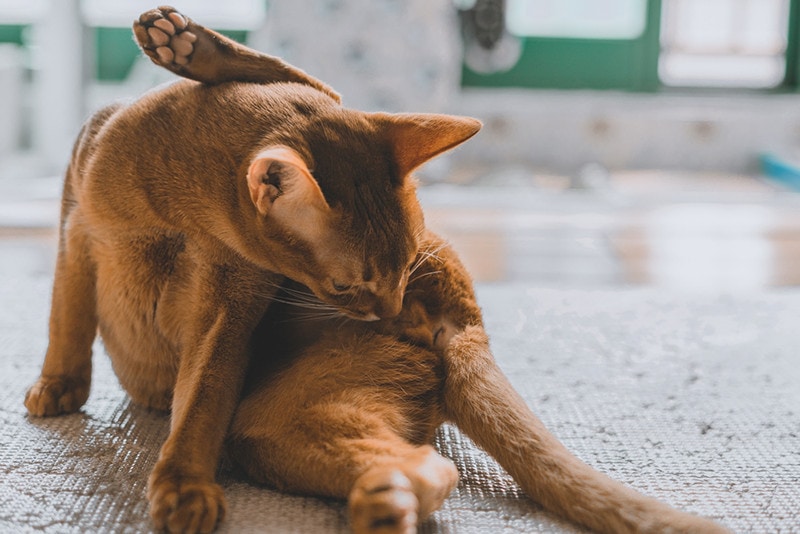
Allergies can transpire in several ways. You might not notice your cat having any issues until physical signs manifest. Luckily, there are other telltale signs that your cat might suffer from allergies.
Inflammation and itchiness around your cat’s butt can occur alongside over-grooming other parts of their body. Your cat may suffer from allergies to different substances such as flea saliva, pollens, dust mites, or food items. At times, finding the offender can be challenging, which is where your vet plays a major role in helping you identify what is causing your cat to have sore skin and lick themselves. If your cat has food allergies, you might have to go through trials of different foods before you find one that works.
- Lackluster coat
- Overgrooming
- Skin irritation
- Hair loss
- Scabby skin
- Vomiting and/or diarrhea
2. Parasites
When was the last time you had your cat in for a routine dewormer at the vet? If you skipped out on a few treatments, your cat could suffer from a parasitic infection. You can get over-the-counter or prescription medication from your veterinarian. Luckily these are generally easy to treat.
- Visible worms in feces
- Soft or runny stools
- Vomiting
- Weight loss
- Poor coat
- Voracious appetite
3. Foreign Object
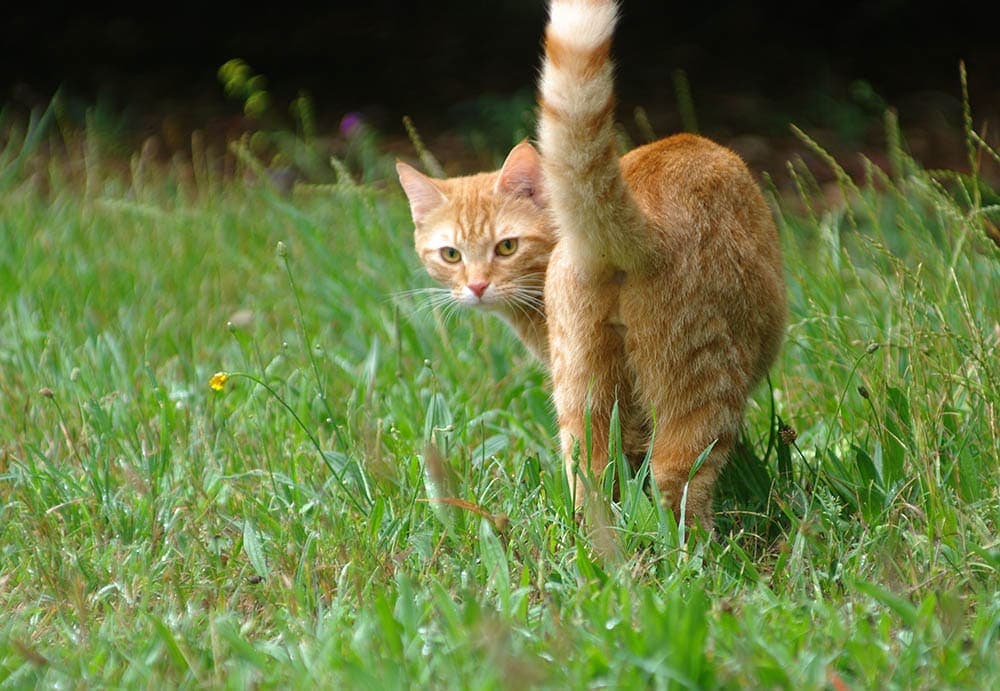
Your cat could’ve swallowed something that is irritating the lining of the bowel. If your cat has trouble passing it, it could cause the rectum to become inflamed and sore.
A foreign object stuck in the intestinal tract can cause significant health issues if left untreated. If there is any indication that this could be the problem, immediate vet care is crucial. This is a time-sensitive matter and could be the determining factor of life or death for your cat.
Be aware that surgery might be required if your cat cannot pass the object.
- Vomiting
- Diarrhea
- Abdominal tenderness
- Decreased appetite
- Straining to defecate
- Lethargy
- Changes in behavior
4. Polyps & Tumors
Rectal polyps are abnormal growths that develop in the lower intestinal tract. Most of the time, these growths are benign, but they can be irritating and problematic for your cat. Typically, you will notice softer stools with blood and your cat having difficulties using the litter box. Luckily, they are not very common. Once you notice it, it cannot be resolved without veterinary treatment.
Rectal tumors cause cells to grow rapidly in the same location. Like polyps, they are not very common. However, they are mostly malignant (cancerous), so it is essential to seek medical evaluation if you suspect either of these conditions.
Typically, polyps and tumors affect older cats, but felines of any age can develop this condition. Any abnormal growths will have to be tested for cancer. So, you and your veterinarian will have to go through the process and procedure and determine which treatment method will work for your pal.
- Straining to defecate
- Appearing constipated
- Exhibiting diarrhea
- Streaks of bright red blood and feces
- Vocalizing while defecating
- Mucus in stool
- Perianal over-grooming and redness
5. Anal Sac Problems
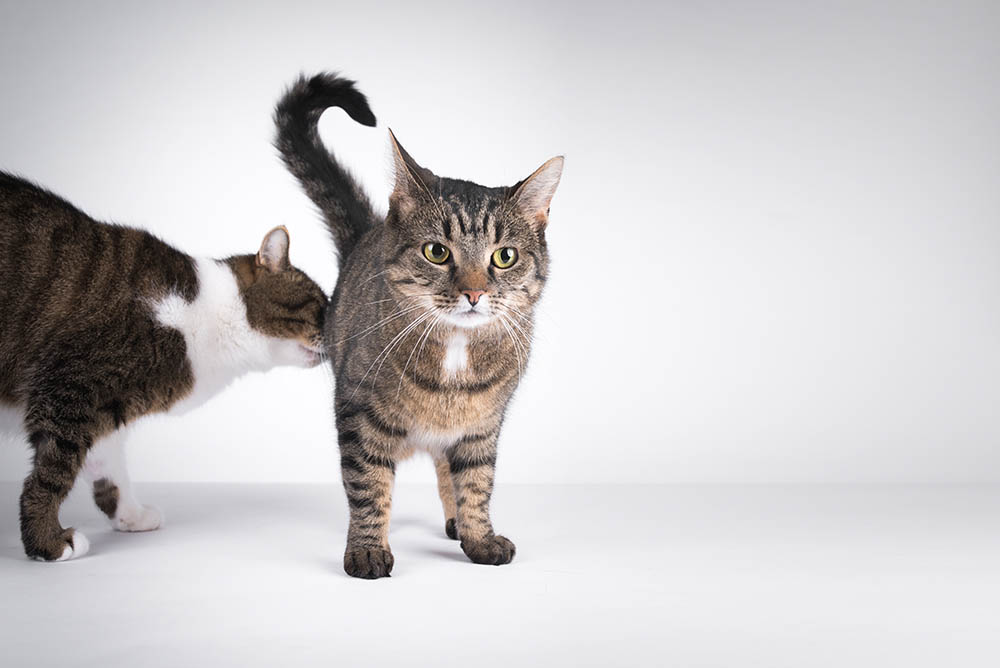
Anal sac issues are not as common in cats as they are in dogs, but they can still cause your cat’s butt to look red and uncomfortable. It is important to contact your vet as soon as you suspect that there is an issue with your cat’s anal sacs. Early intervention on anal sac impaction will often involve a quick manual expression; however, if the problem is left untreated, painful inflammation and abscesses may form. Obesity will make your cat more prone to suffer from this type of issue.
- Over-grooming around the anus
- Hair loss in the area
- Changes in appetite
- Lethargy
- Bloody or sticky discharge around the anus
- Bloody stools
6. Colon or Rectal Inflammation
Colitis is a blanket term for another underlying health condition. Bowel issues like colitis can cause inflammation in the last portion of the digestive tract. Your cat can experience this for days on end—and possibly months.
Many factors, such as poor diet, intestinal bacteria, parasites, stress, and immune-mediated conditions, can contribute. Often, vets will run some tests and prescribe antibiotics, antiparasitic medication, a change in diet, or another treatment method, depending on the exact issue.
- Straining while defecating, mimicking constipation
- Vomiting
- Diarrhea with mucus
- Bloody stool
- Frequent litter box trips
- Changes in appetite
Lack of Additional Signs
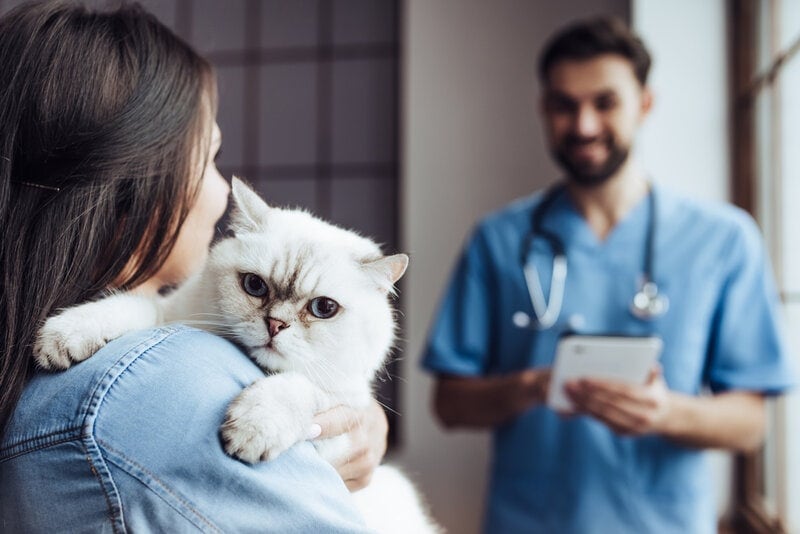
If you’ve run through this list and your cat doesn’t show any of the additional signs we mentioned, you might be at a loss. After all, your cat’s bottom might be red with no other signs of discomfort or changes in litter box habits.
In any case, getting them to your vet is best to be on the safe side. It could be something very simple as momentary diarrhea or another form of external irritation. This might pass on its own, but you’ll want to monitor your cat closely for any changes.
What might not seem serious one day can quickly turn the next. If you have pet insurance that offers online chats, you can always reach out to a professional to see what they suggest.
If your cat is in no way showing visible discomfort, they might request that you wait it out to see if the problem persists after a few days. But it is best to reach out for professional guidance if you are concerned about your cat’s health, especially if your cat seems uncomfortable with the new situation.
Conclusion
No matter the underlying issue, proper treatment is essential when your pet has a red butt. It can be tough to diagnose at home and even harder to treat. That is why our trusted veterinarians always come in handy, willing to help our pets at every turn.
Proper testing is often needed to get to the root of the problem, and sometimes these issues can be time sensitive. Once your vet determines the underlying condition, you can get your cat on the right path to recovery. In the meantime, it’s essential to take note of all the signs you’re seeing so you can relay this information to your vet to help with diagnosis.
Featured Image Credit: Stanislaw-Mikulski, Shutterstock



